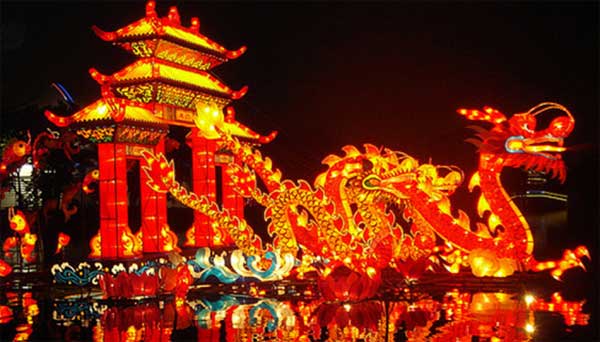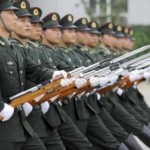
The agreement reached between the two Asian giants to ease tensions on the Line of Actual Control (LAC) took many by surprise. The implementation began on 10th February with phased withdrawal from the north and south banks of the Pangong Tso Lake, a major area under dispute being referred to as friction point by both the sides. The entire process including removal of infrastructure created after April 2020 and vacation of heights occupied by the infantry units is likely to take 10-15 days as the entire exercise is being undertaken in an atmosphere of utter trust deficient between the two sides. A strict and fool proof verification mechanism has been put in place to avoid the incidents of the past which left to physical clash between the two sides at Galwan in June last year. After the disengagement process is successfully completed in this sector, the commanders are scheduled to meet within 48 hours to discuss the modalities from disengagement in other sectors. Patrolling has been suspended in the area temporarily to avoid clashes. While majority at home and abroad are happy with the agreement reached and possibility of normalcy returning along the LAC, there are many naysayers and doubting toms within the country who are blaming the government for a sell out and ceding our territory in Eastern Ladakh to the Chinese. Some have also stated that possibly there has been a secret deal between the two countries and government has given certain commitments to the Chinese which are being hidden from the nation. Some senior veteran officers have also averred that the government has virtually accepted the 1959 Chinese claim line and questioned the logic of having a buffer zone and our troops vacating the heights occupied on the Kailash Range. Many of the doubts have arisen because of the duplicitous and treacherous behaviour of the dragon in the recent years.
Nonetheless, credit needs to be given to the Indian negotiators both military and diplomatic for their perseverance, patience and persuasion. Backed by an unambiguous political directive of not ceding even an inch of territory to the Chinese, the negotiators refused to wither down or get fatigued due to prolonged negotiations, a tactics used by the Chinese to tire and wear down the adversary and succumb to the Chinese pressure, a manifestation of the Chinese strategy of “Winning without Fighting”. They stuck to their aim and in the process convinced the Chinese of the futility of confronting a determined India which was in no mood to bow down before the expansionist and revisionist ideology of the Chinese Communist Party (CCP) under its all-powerful leader Xi Jinping who had taken upon himself to fulfil the “China Dream” by 2049, centenary year of the Communist rule. The Indians have worked hard to convince the dragon to relent.
The credit also goes to valiant Indian Army and its field commander who turned the tables on the Chinese through a brilliant tactical manoeuvre to outflank the PLA Army troops on the north bank by occupying tactical heights on Kailash Range on the south bank on own side of the LAC. It enabled the negotiators at all levels to undertake tough negotiations without conceding to the solutions offered by the Chinese.
Xi Jinping is an astute politician expert in the art of survival. In an earlier article of mine “Will Xi Jinping Relent”, I had mentioned that Xi would prefer to relent than to bow down or surrender to his adversaries at home. The internal situation in China is not good and Xi’s adversaries are breathing down his neck. The growing resentment among the masses is also affecting the popularity of CCP. Xi Jinping has centralised all powers. Centralisation works well as long as the going is good but worsening internal situation has given rise to many dissenters within the party and other political opponents. The worsening internal situation and dashing of hope of improved relations with America post Trump have played a major role in reaching the agreement after a standoff extending nearly for an year.Xi has enough problems at home and continued standoff with India was harming their national interests including economy which probably made the Dragon relent.
The first and the most compelling reason was the realisation by Xi Jinping that the Chinese have bitten much more than they could chew. The Chinese belligerence and expansionism was for the first time opposed strongly everywhere after the Indians had shown the way of refusing to get bullied and giving into the Chinese hegemony. Determined response of India acted as elixir for other victims of Dragon’s expansionism in South and East China seas, across the Taiwan Strait and the Indo-Pacific region. The Chinese calculation of taking advantage of the ongoing pandemic (which is alleged to be of Chinese origin) misfired very badly. The Chinese resources but not only overstretched but fatigued thus exposing the fragility of its armed forces in a combat situation.
The Chinese troops were found wanting as far as fighting in super high altitudes is concerned. They were unable to bear the vagaries of hostile weather and extreme wind chill factor which makes survival at these heights extremely difficult. The emphasis in the PLA has been to fight in a digital environment avoiding contact battles least realising the logistics and physical problems of a super high altitude warfare. Thus, the morale of the PLA soldiers was in their boots despite claims of providing them with centrally heated habitat. Indian soldiers on the other hand beat their adversaries hands down and were seen to be by their counterparts as very agile, alert and aggressive. Conscription in the Chinese Army and their young soldiers being product of one-child norm was another contributory factor. There was tremendous pressure back home from their parents and PLA veterans to pull back from the area.
The other major problem faced by China is the failure of the domestic consumption market to pick up momentum. Though Chinese GDP has remained in the positive its attempts to shift from manufacturing driven economy to consumption driven economy has not yielded the desired result. China’s consumption- a key driver of growth- has dampened the hopes of revival amidst fears of resurgence of the Wuhan pandemic. The retail sales are still slowed down displaying lack of confidence among the masses. To revive the spirits before the Chinese New Year celebrations begin, the disengagement has been so timed. China can ill afford tensions it has acquired globally through its revisionist policies seems to have been realised by Xi.
Problems facing the banking industry have yet to be resolved. Likelihood of a rapid slowdown in credit growth also looms large. Rising labour costs, ageing population, spike in credit defaults, growing rich-poor & urban-rural disparity, rising unemployment, near collapse of Xi’s favourite Belt Road Initiative are the other ills affecting the Chinese economy and domestic stability.
Agrarian crisis has emptied the domestic granaries compelling China to import food grains. China’s food inflation has risen by double digits. Spiralling prices of food items particularly pork, the most commonly consumed meat in the country, has angered the masses. The continued war time deployment of its combat forces in Tibet further compounded the problem. Xi has realised that its tactics of diverting the attention of Chinese public through display of aggressive behaviour towards India and other neighbours in fact has backfired.
Unrest in Hong Kong, combative Taiwan, growing dissension in Tibet and Xinxiang, growing dissatisfaction among the masses and economic uncertainties have compelled the Dragon to look inwards and resolve domestic problems rather than challenge the might of its adversaries on the borders. Knowing Xi Jinping, it could be a tactical withdrawal for the time being.
Among the external factors that may have contributed to the Chinese disengagement at this time after a prolonged and elongated standoff through the winters are the Indian revival story and certain pronouncements of the new US President Joe Biden.
The Indian bounce back from the China originated pandemic has taken the Communist China by surprise. India has not only embarked upon the path of AatmNirbhar Bharat (Self Reliant India) but the bold decisions taken to ban the Chinese goods, Apps and business houses has not only reduced he trade deficit between the two countries but has also hit its economy. The way India controlled the pandemic and was among the few nations to develop not only one but four vaccines (two already launched) belied the hopes of Chinese leadership which had hoped the collapse of Indian economy and its consequent weakening as a regional power. Instead, India’s speedy revival of economy and growing soft power through “Vaccine Maitri” has ruffled many feathers not only in China but its cronies as well.
Another reason which is attributed to prolonged negotiations is the Chinese desire to wait and watch the way things unfold globally after the presidential elections in the US are completed. Contrary to the Chinese expectations despite the change in presidency the new POTUS is as aggressive against China as his predecessor. He has termed China as number adversary and the new US administration has not only openly supported India and cautioned China against its growing expansionism, it has also promised to strengthen the security alliance with Japan to counter the increasing Chinese threat in the region. The United States has accused China of bullying and attempting to build a “maritime empire” in South China Sea, announcing several rounds of sanctions on Chinese state companies involved in building artificial islands. To Dragon’s dismay France, EU, Great Britain and Australia have also joined hands with the US to curb China’s expansion.
All in all, a process has begun with a ray of hope that normalcy would return soon along the troubled LAC, de facto border between the two Asian giants. Considering that it’s just the beginning and ‘miles to go before we sleep’ peacefully because successful completion of this phase would pave way for the subsequent disengagements in other disputed sectors that would lead to ultimate de-escalation without which for peace to prevail is difficult.
India can ill-afford to let its guard down and hence there should be no let-up in its 24×7 surveillance and preparation for an inevitable war with China.




